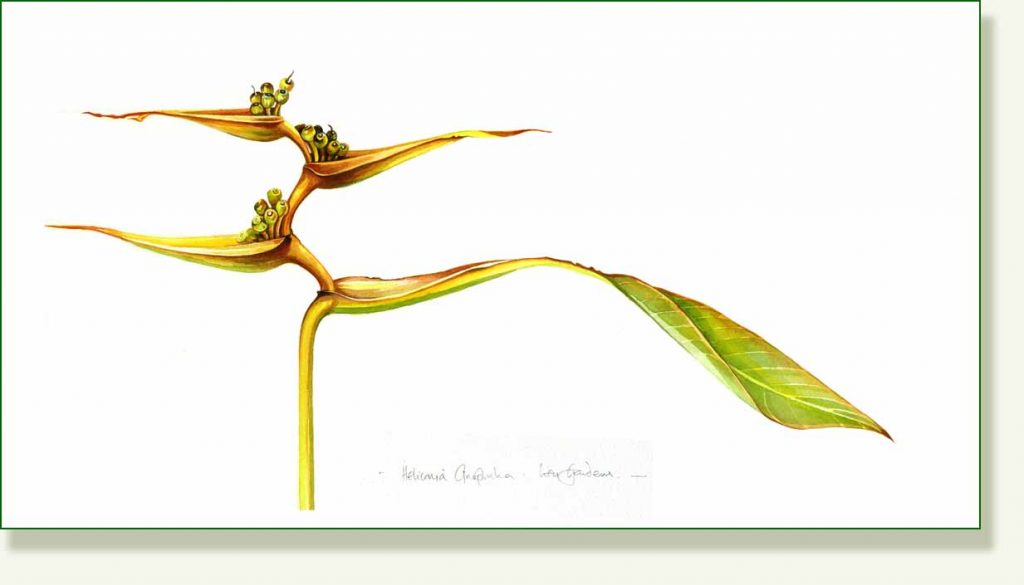“Sweet” is such a pretty word, applied to so many pleasing things, from flavours and scents to the very nature of things and even sometimes to us humans. Just now, as you walk though Leu Gardens, sweet scents follow you everywhere you go. Around every corner there is another subtle fragrance, different but so delightful, and the citrus garden is heavenly with the Valencia Orange and the Pink Lemon in full bloom. But sometimes the source of the scent is hard to track down. Hiding away, tucked in between leaves or carried high above your head are many pretty and sweet smelling little flowers, often with “sweet” in their name. My sketch today is of the Sweet Osmanthus but there are also:
The Sweet Almond Bush, Aloysia virgata,
the Sweet Viburnum, viburnum odoratissimum,
the Sweet Acacia, Acacia farnesiana,
and, cut back this year but still with enough perfume to scent the lakeside path is the Chinese Glory Bower Clerodendrum chinense.
Perhaps most surprising of all, is the exquisite scent of the Chinese Perfume Plant, Chinese Rice Flower, Mock Lemon, Aglaia odorata. It is really hard to believe that this tiny flower and quite nondescript little shrub can produce such strong scent. You would probably walk past it, looking for something much showier that would merit this heady perfume. It carries on blooming all year round and if I were to have just one scented shrub in my imaginary garden it would be this one. It’s evergreen too and would make a divine perfumed hedge.
But today I have sketched the Sweet Osmanthus, Osmanthus fragrans also known as Sweet Olive, Tea Olive or Fragrant Olive.
I grew the wonderful Winter Sweet Chimonanthus fragrans, in a sheltered spot in my little garden in England. I loved it most for the strange small flowers that appeared early in the year on bare stems. The little Osmanthus here reminds me of it, with its groups of tiny pretty scented flowers sometimes growing from the main stems.
The Sweet Osmanthus was introduced into Europe from China in the middle of 19th century by a French botanist Jean Marie Delavay. The word Osmanthus being derived from the Greek osma, meaning “fragrant”, and anthos, meaning “flower”.
It is so pretty and dainty and is native to China where it is the ‘city flower’ of Hangzhou.
This is from Top Tropicals here
Chinese monks planted these trees around Buddhist temples in the Manjuelong Valley which lies in the mountainous area. As time went on, the blossoming Osmanthus trees in the valley became an autumnal allure to Hangzhou residents. The valley is flanked by hills where springs are abundant and trees flourish naturally. The geographic advantages and monk’s heritage has made the valley a paradise of osmanthus trees. Now all households in the valley without exception have their own osmanthus groves. When dew is heavy at dawn, flowers will fall floating like a rain in a breeze.
Valued for its delicate aroma, some say like peaches or apricots, it is used as an additive to flavour teas and desserts. The flowers of Osmanthus range from white to orange to reddish, the very expensive perfume extract, Osmanthus absolute, is usually prepared from the gold-orange flowers.


Chinese stamps from an article by John C. Leffingwell. Ph.D about the perfume of osmanthus on the Leffingwell site
I have been thinking of all the other lovely sweet flowers in the UK too, meadow sweet, sweet violet, and the incomparable sweet pea. My father worked for a seed company in Lincolnshire and in the summer we would go to the trial grounds and pick armfuls of sweet peas that were growing in tall colour coded rows. I remember the colours shifting from yellows to creams to pinks to reds to dark crimsons and lilacs. They scented the house for days and days.
So here is a small watercolour sketch of a twiggy stem of the sweet little Sweet Osmanthus. The flowers survived in the fridge a couple of days, just long enough. I think this could be another to develop for the white flower series.
______________________________________________

















